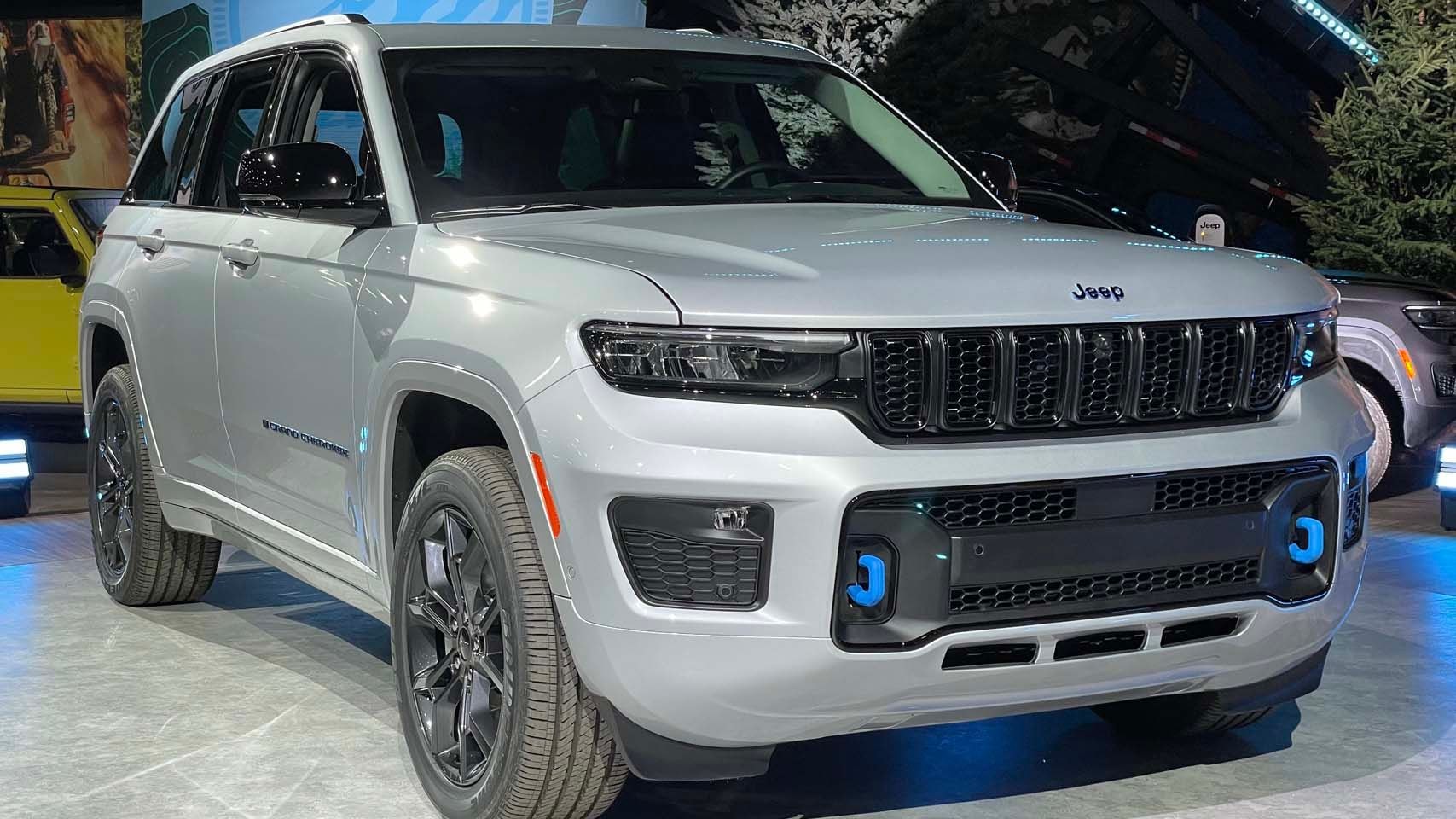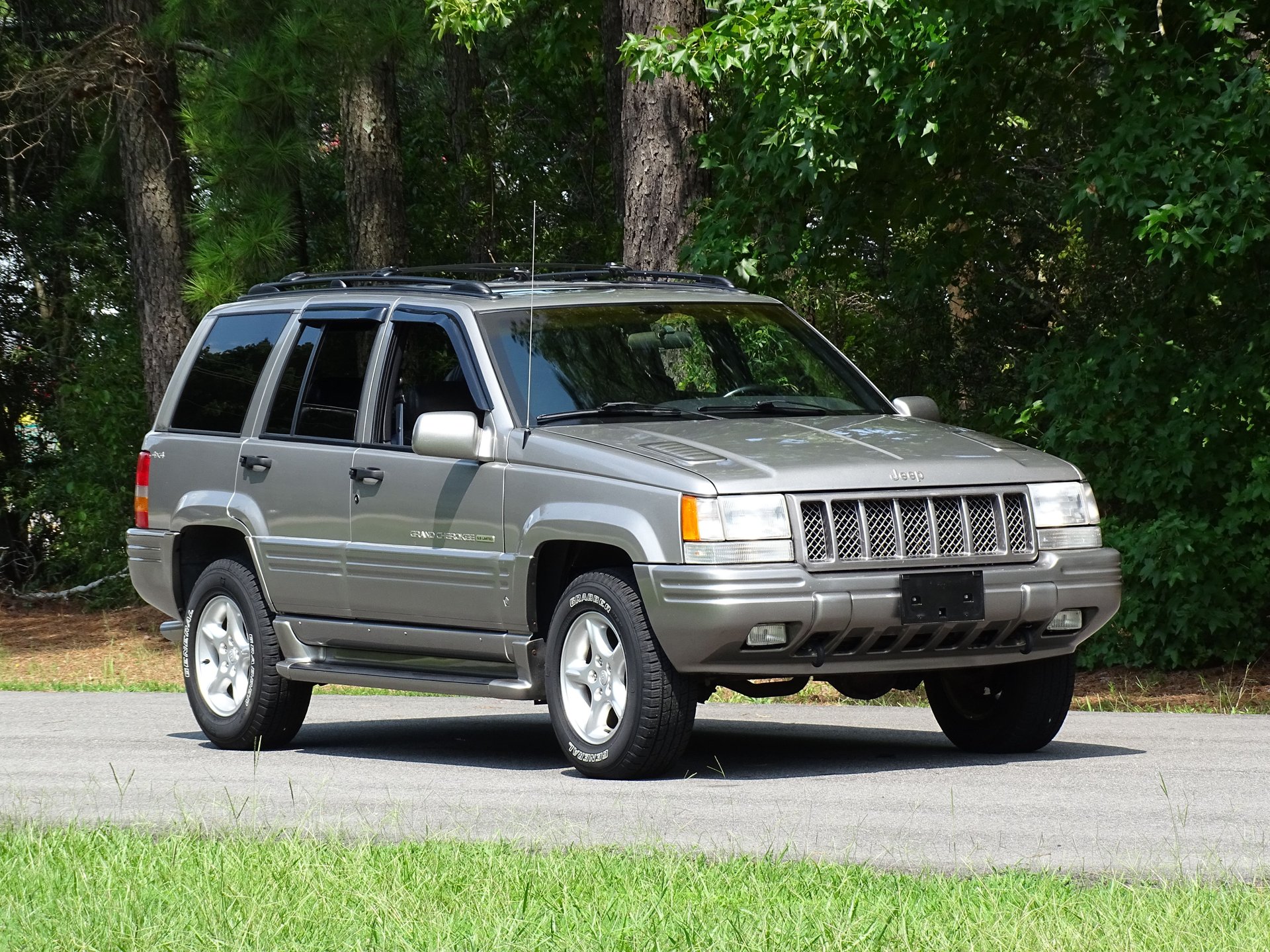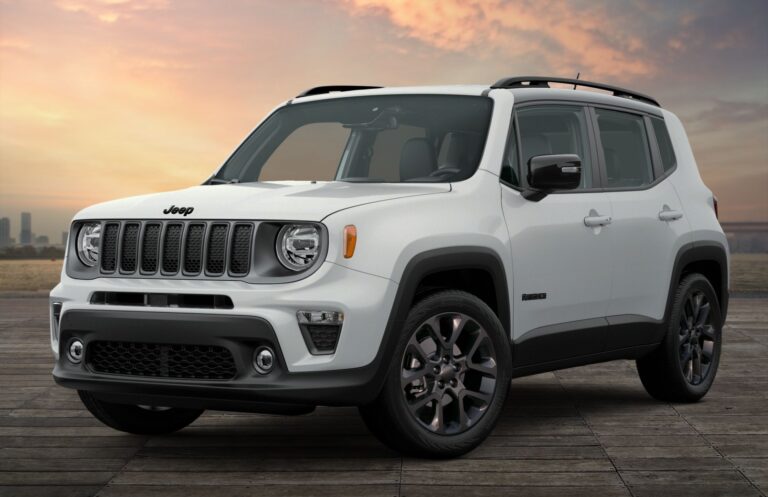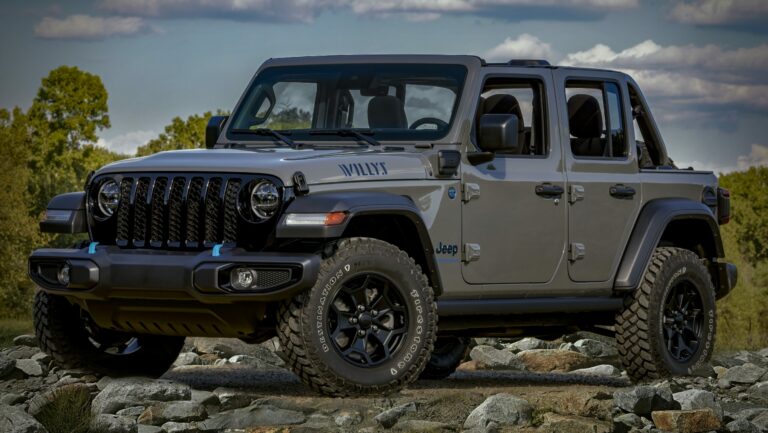Cherokee Jeep: A Comprehensive Guide to an Automotive Icon
Cherokee Jeep: A Comprehensive Guide to an Automotive Icon jeeps.truckstrend.com
The name "Jeep Cherokee" evokes a powerful image: rugged capability, adventurous spirit, and a deep-rooted legacy in the automotive world. Far from being a singular model, the Cherokee represents a storied lineage of sport utility vehicles that have consistently pushed boundaries, adapted to changing consumer needs, and maintained an undeniable presence on both paved roads and challenging trails. From its revolutionary unibody design in the 1980s to its modern, refined iterations, the Cherokee has carved out a unique niche, appealing to a diverse range of drivers seeking a blend of utility, performance, and the iconic Jeep DNA.
This comprehensive guide delves into the multifaceted world of the Jeep Cherokee, exploring its rich history, key features, benefits, practical considerations, and what makes it a compelling choice for countless enthusiasts and everyday drivers alike.
Cherokee Jeep: A Comprehensive Guide to an Automotive Icon
A Legacy Forged in Steel: The Evolution of the Cherokee Jeep
The story of the Jeep Cherokee is one of continuous evolution, marked by several distinct generations, each leaving its own indelible mark on the automotive landscape. While earlier full-size Wagoneer-based Cherokees existed, the true icon, the one most people associate with the name, began its journey in the mid-1980s.
The Game-Changer: XJ Cherokee (1984-2001)
The XJ generation redefined the SUV segment. Breaking away from traditional body-on-frame construction, the XJ was one of the first compact SUVs to utilize a unibody (monocoque) design, offering a lighter, more rigid structure that improved handling and fuel efficiency. It was a perfect blend of a family wagon and a robust off-roader, leading to its immense popularity. Available with a range of engines, including the legendary 4.0-liter inline-six, the XJ quickly earned a reputation for its bulletproof reliability, impressive off-road prowess (thanks to solid axles and robust 4×4 systems), and utilitarian charm. Its boxy, no-nonsense styling became instantly recognizable and remains highly sought after by off-road enthusiasts and classic Jeep collectors.
The Modern Transition: KJ (Liberty, 2002-2007) & KK (Liberty, 2008-2012)
Following the monumental success of the XJ, Jeep introduced the KJ generation, known as the "Liberty" in North America (but retaining the Cherokee name in other markets). This model marked a significant departure, featuring a more rounded, contemporary design and, for the first time in a compact Jeep, an independent front suspension. While it offered improved on-road comfort and safety features, some purists missed the XJ’s rugged simplicity. The KK generation continued this evolution, offering updated styling and more refined interiors, but still maintaining the Liberty moniker in North America. These generations continued to offer respectable off-road capability, particularly with their robust 4×4 systems.
The Contemporary Era: KL Cherokee (2014-Present)
After a brief hiatus, the Cherokee nameplate returned globally in 2014 with the KL generation. Built on a car-based platform (derived from the Alfa Romeo Giulietta), the KL Cherokee introduced a radically modern design, characterized by its distinctive split headlamp configuration. This generation emphasizes a more refined on-road driving experience, improved fuel economy, and a host of advanced technology and safety features. Despite its car-like underpinnings, the KL Cherokee, especially in its Trailhawk trim, still delivers legitimate off-road capability, earning the coveted "Trail Rated" badge through advanced 4×4 systems like Active Drive Lock. It blends everyday usability with the adventurous spirit synonymous with the Jeep brand.
Why Choose a Cherokee Jeep? Benefits and Appeal
The enduring appeal of the Jeep Cherokee lies in its unique combination of attributes that cater to a wide spectrum of drivers.
- Unparalleled Off-Road Capability: This is arguably the Cherokee’s most significant selling point. While specific capabilities vary by generation and trim (with the XJ and KL Trailhawk being standouts), Cherokees are engineered to tackle challenging terrain. Features like robust 4×4 systems, low-range gearing, ample ground clearance, and specialized off-road modes (in newer models) make them formidable trail vehicles.
- Versatility and Practicality: The Cherokee seamlessly transitions from a daily commuter to a weekend adventure vehicle. Its compact to mid-size footprint makes it maneuverable in urban environments, while its spacious interior (for its class) and cargo capacity accommodate families, gear, and groceries with ease.
- Durability and Reliability: Particularly the older XJ models are renowned for their legendary durability and simple, easy-to-maintain mechanics. Modern Cherokees continue to build on this reputation with advanced engineering and robust powertrains, offering long-term reliability for diligent owners.
- Strong Resale Value: Jeep vehicles, especially those with off-road prowess, tend to hold their value well. The Cherokee’s iconic status and desirable attributes contribute to its sustained demand in the used car market.
- Vast Aftermarket Support and Community: For enthusiasts, the Cherokee (especially the XJ) benefits from an enormous aftermarket industry offering parts for customization, performance upgrades, and off-road modifications. Furthermore, a passionate global community of Cherokee owners shares knowledge, organizes events, and fosters a strong sense of camaraderie.
- Comfort and Modern Features (KL): The latest KL generation offers a sophisticated cabin with premium materials, comfortable seating, and cutting-edge technology, including Uconnect infotainment systems, advanced driver-assistance features, and a smooth ride for daily driving.


Navigating the Options: Types and Trims
Understanding the various trims and configurations is crucial when considering a Jeep Cherokee, as they significantly impact capabilities and features.
Current KL Generation Trims (2024 Model Year as an example):
- Latitude: The entry-level trim, offering essential features, front-wheel drive (FWD) as standard, with available 4×4. Focuses on value and everyday usability.
- Latitude Plus/Altitude: Builds upon the Latitude with additional comfort and convenience features, often including appearance upgrades (like blacked-out accents on Altitude).
- Limited: A more luxurious trim, featuring premium materials, larger wheels, advanced infotainment, and more convenience features. Often comes with more powerful engine options and advanced 4×4 systems.
- Trailhawk: The pinnacle of off-road capability in the KL lineup. Distinguished by its aggressive styling, red tow hooks, and "Trail Rated" badge. It includes the advanced Active Drive Lock 4×4 system with a locking rear differential, increased ground clearance, off-road suspension, skid plates, and Selec-Terrain Traction Management System with a Rock mode.
- Overland: The most premium trim, offering top-tier luxury, advanced technology, and refined styling, focusing on comfort and sophistication while retaining Jeep’s capability.
Older Generations (XJ, KJ/KK):
Older Cherokees and Liberties also came in various trims like Sport, Laredo, Limited, and Country. These trims primarily differentiated by interior appointments, wheel designs, and the inclusion of features like power windows, air conditioning, and premium sound systems. For XJ, the choice often comes down to the legendary 4.0L inline-six engine and the choice of Command-Trac (part-time 4WD) or Selec-Trac (full-time 4WD).
Important Considerations Before Buying
Whether you’re eyeing a brand-new KL or a vintage XJ, thoughtful consideration is key to a satisfying ownership experience.
- New vs. Used:
- New (KL): Offers the latest technology, safety features, warranty coverage, and modern comfort. Higher initial cost.
- Used (XJ, KJ, KK, older KL): More budget-friendly. XJs offer classic charm and ruggedness but may require more maintenance due to age. KJ/KKs are a middle ground, offering more modern amenities than XJ at a lower price than KL. Always get a pre-purchase inspection for used vehicles.
- Intended Use:
- Daily Commuter/Family Vehicle: A KL Cherokee offers excellent on-road manners, safety, and comfort.
- Serious Off-Roader/Project Vehicle: The XJ is an ideal choice due to its robust design, solid axles, and vast aftermarket support. The KL Trailhawk is also highly capable for stock off-roading.
- Towing: While some Cherokees are capable of towing (check specific model limits), larger towing needs might necessitate a Grand Cherokee or a full-size truck.
- Maintenance and Common Issues:
- XJ: Known for cooling system issues (overheating), exhaust manifold cracks, and rust (especially in northern climates). However, parts are readily available and repairs are often straightforward.
- KJ/KK: Some owners report issues with ball joints and cooling systems.
- KL: Early models (2014-2015) experienced some quirks with the 9-speed automatic transmission (often resolved with software updates), and occasional Uconnect infotainment glitches. Overall, modern Cherokees are generally reliable, but regular maintenance is crucial.
- Fuel Economy: Generally, Jeeps are not known for stellar fuel efficiency. Older XJs with the 4.0L engine typically get 15-20 MPG. Newer KL models with smaller engines and more gears offer better economy (20-30 MPG depending on drivetrain and engine), but it’s still competitive rather than class-leading.
- Safety Features: Modern KL Cherokees boast a comprehensive suite of active and passive safety features, including multiple airbags, stability control, blind-spot monitoring, rear cross-traffic alert, adaptive cruise control, and lane-keeping assist. Older models have fewer advanced safety systems but still offer fundamental protection.
Maximizing Your Cherokee Experience: Tips and Practical Advice
Owning a Jeep Cherokee is more than just driving a car; it’s an experience. Here are some tips to make the most of it:
- Adhere to Regular Maintenance: This is paramount, especially for older models. Fluid changes (engine oil, transmission fluid, differential fluid), tire rotations, and brake inspections will ensure longevity and performance.
- Understand Your 4×4 System: If your Cherokee has 4×4, learn how to use it correctly. Know when to engage 4-High for slippery conditions and 4-Low for serious off-roading. Consult your owner’s manual for specific instructions on your model’s Selec-Terrain or Command-Trac/Selec-Trac system.
- Invest in Quality Tires: Tires are your vehicle’s only contact with the ground. All-terrain (A/T) tires are a great compromise for everyday driving and occasional off-roading. For serious trail use, dedicated mud-terrain (M/T) tires are essential.
- Consider Aftermarket Upgrades (for enthusiasts): For XJ owners, lift kits, larger tires, upgraded bumpers, and rock sliders are popular modifications to enhance off-road capability and aesthetics. For KL Trailhawk owners, minor upgrades like recovery points or a winch can further boost confidence on the trail.
- Join the Community: Connect with other Jeep Cherokee owners through online forums, social media groups, and local Jeep clubs. This is an invaluable resource for advice, technical support, trail recommendations, and camaraderie.
- Practice Off-Road Driving Skills: If you plan to take your Cherokee off-road, start with easy trails and gradually challenge yourself. Learn about tire pressure for off-roading, spotting, and recovery techniques.
Challenges and Solutions
No vehicle is without its challenges, and the Cherokee is no exception. However, most can be effectively managed.
- Challenge: Fuel Efficiency:
- Solution: Drive conservatively, maintain proper tire pressure, keep up with engine maintenance (clean air filter, spark plugs), and avoid excessive idling. For older models, consider lighter wheels and efficient tires.
- Challenge: Aging Components (for older XJ/KJ/KK models):
- Solution: Proactive replacement of wear items (bushings, hoses, belts) can prevent breakdowns. Address rust early with treatments or panel replacement. A good mechanic specializing in older Jeeps is an asset.
- Challenge: Early KL 9-Speed Transmission Quirks:
- Solution: Ensure all factory software updates have been applied. If issues persist, consult a certified Jeep mechanic. Many issues were resolved with software and didn’t indicate a major mechanical fault.
- Challenge: Limited Interior Space (compared to larger SUVs):
- Solution: Utilize roof racks or cargo carriers for extended trips. Organize interior space efficiently with storage solutions. Remember the Cherokee is a compact/mid-size SUV, not a full-size hauler.
- Challenge: Potential for Costly Repairs (for neglected vehicles):
- Solution: Thorough pre-purchase inspection for used models. Stick to the manufacturer’s recommended maintenance schedule. Address warning lights and strange noises promptly to prevent minor issues from escalating.
Price Table: Jeep Cherokee (Estimated)
Please note: Prices for used vehicles vary significantly based on year, mileage, condition, trim, and geographic location. New MSRPs are starting prices and do not include options, destination fees, or taxes.
| Model/Generation | Trim/Variant | Estimated New MSRP (USD) | Typical Used Price Range (USD) | Key Engine Options | Transmission | Drivetrain | Combined MPG (Est.) | Seating |
|---|---|---|---|---|---|---|---|---|
| KL Cherokee (2024) | Latitude (FWD) | $35,000 – $37,000 | N/A (Too new) | 2.4L Tigershark MultiAir I-4 | 9-speed Automatic | FWD / Active Drive I | 23-26 | 5 |
| Latitude (4×4) | $36,500 – $38,500 | N/A (Too new) | 2.4L Tigershark MultiAir I-4 | 9-speed Automatic | Active Drive I | 21-24 | 5 | |
| Limited | $39,000 – $42,000 | N/A (Too new) | 2.4L Tigershark MultiAir I-4 | 9-speed Automatic | Active Drive I | 21-24 | 5 | |
| Trailhawk | $42,000 – $45,000 | N/A (Too new) | 3.2L Pentastar V6 | 9-speed Automatic | Active Drive Lock | 20-22 | 5 | |
| XJ Cherokee (Late 90s) | Sport / Laredo / Limited | N/A (Discontinued) | $5,000 – $20,000+ | 4.0L PowerTech I-6 | 4-speed Automatic / 5-speed Manual | 2WD / Command-Trac / Selec-Trac | 15-20 | 5 |
| KJ/KK Liberty (Mid-2000s) | Sport / Limited | N/A (Discontinued) | $4,000 – $12,000 | 3.7L PowerTech V6 / 2.8L CRD | 4/5-speed Automatic | 2WD / Command-Trac / Selec-Trac II | 16-22 (V6) / 20-25 (CRD) | 5 |
Note: The 2.0L Turbo engine was available in earlier KL models but is largely phased out for 2024.
Used prices for XJ Cherokees can vary wildly, with pristine, low-mileage examples or highly modified off-road builds fetching significantly higher prices.
Frequently Asked Questions (FAQ) about the Jeep Cherokee
Q1: Is the Jeep Cherokee a good SUV?
A1: Yes, the Jeep Cherokee is widely considered a good SUV, particularly for those who value capability, versatility, and the Jeep brand heritage. Modern KL models offer a comfortable ride, advanced tech, and good safety. Older XJ models are highly regarded for their durability and off-road prowess.
Q2: What’s the difference between the Jeep Cherokee and the Jeep Grand Cherokee?
A2: The Grand Cherokee is a larger, more premium, and typically more expensive SUV than the standard Cherokee. It offers more interior space, more powerful engine options (including V8s), and a more luxurious experience. The Cherokee is a compact to mid-size SUV, while the Grand Cherokee is a mid-size to full-size SUV.
Q3: Is the Jeep Cherokee good off-road?
A3: Absolutely. The Cherokee has a strong reputation for off-road capability. The classic XJ is an off-road legend, and the current KL Cherokee, especially in its Trailhawk trim with the "Trail Rated" badge, is highly capable for moderate to serious off-roading, featuring advanced 4×4 systems and specialized features.
Q4: What are common problems with the Jeep Cherokee?
A4: Common issues vary by generation. Older XJs can suffer from rust, cooling system issues, and exhaust manifold cracks. Early KL models (2014-2015) had some reported issues with the 9-speed automatic transmission, often resolved with software updates. General problems can include Uconnect infotainment glitches in newer models. Regular maintenance helps mitigate most issues.
Q5: How long do Jeep Cherokees last?
A5: With proper maintenance, a Jeep Cherokee can last a long time. Many XJ Cherokees are still on the road with over 200,000 miles, and some even surpass 300,000 miles. Modern Cherokees are also built to last, with owners reporting good longevity when maintained according to the manufacturer’s schedule.
Q6: What’s the fuel economy like on a Jeep Cherokee?
A6: Fuel economy varies significantly by generation and engine. Older XJs (4.0L engine) typically get 15-20 MPG combined. Modern KL Cherokees with their more efficient engines and 9-speed transmissions offer better fuel economy, generally ranging from 20-26 MPG combined, depending on the engine and drivetrain (FWD vs. 4×4).
Q7: Can I tow with a Jeep Cherokee?
A7: Yes, most Jeep Cherokee models have towing capabilities. The maximum towing capacity varies by engine and configuration. For example, the KL Cherokee with the 3.2L Pentastar V6 engine can tow up to 4,500 pounds when properly equipped. Always check your specific model’s owner’s manual for exact towing limits.
Q8: Which Cherokee generation is best?
A8: The "best" generation depends on your priorities.
- XJ: Best for classic ruggedness, extreme off-roading (with modifications), and a strong aftermarket.
- KJ/KK (Liberty): A good balance for those wanting a slightly more modern feel than the XJ but still with robust capability.
- KL: Best for daily driving comfort, modern technology, safety features, and a refined ride, while still offering excellent off-road prowess in the Trailhawk trim.
Conclusion: The Enduring Allure of the Cherokee Jeep
The Jeep Cherokee is more than just a vehicle; it’s a testament to innovation, adaptability, and the enduring spirit of adventure. From its groundbreaking unibody design that revolutionized the SUV market to its current iteration blending modern refinement with legendary capability, the Cherokee has consistently delivered on its promise of versatility and rugged charm. Whether you’re drawn to the raw, mechanical simplicity of a vintage XJ, the balanced utility of a KJ or KK, or the contemporary sophistication and technology of a KL, there’s a Cherokee that fits a wide range of lifestyles and aspirations.
Its legacy of off-road prowess, combined with its ability to serve as a practical daily driver, ensures its continued relevance in a competitive automotive landscape. The Cherokee Jeep remains a compelling choice for those seeking a vehicle that embodies freedom, capability, and an undeniable connection to the open road – or the road less traveled. It’s not just a car; it’s an invitation to explore.






